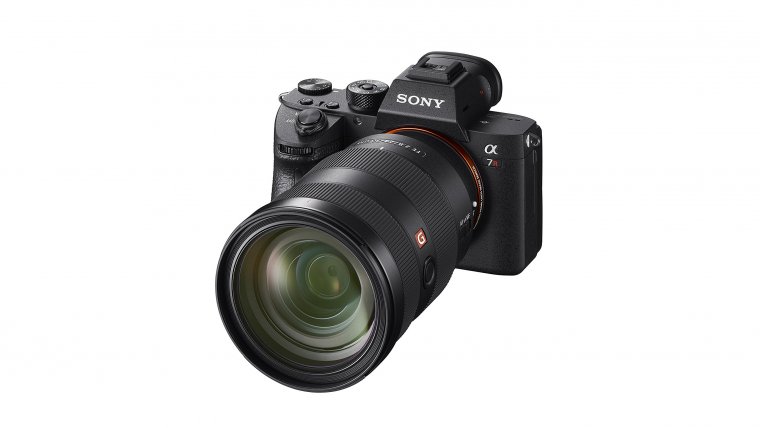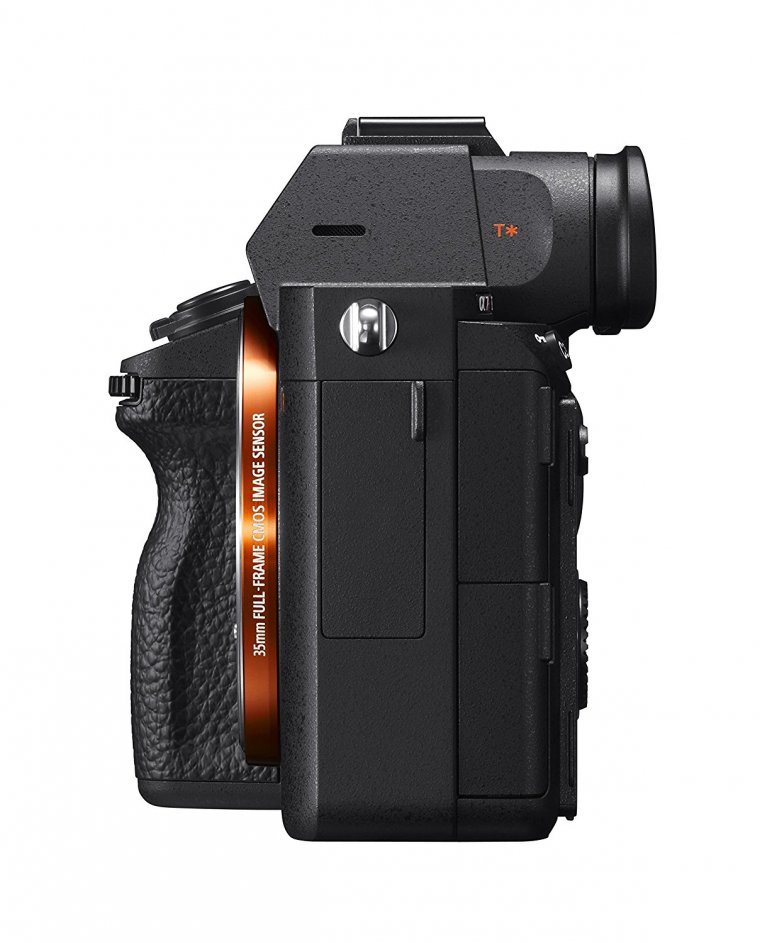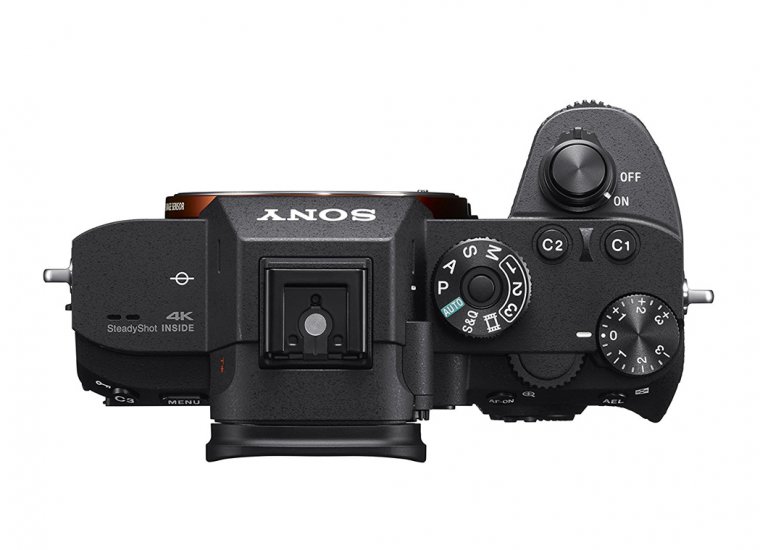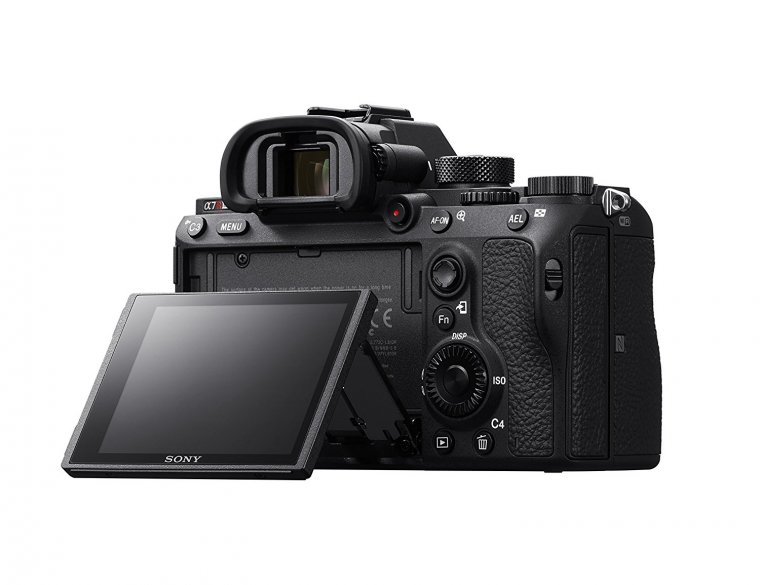
Mirrorless cameras are certainly all the rage these days and are slowly overtaking every segment of the camera market piece by piece. The competition between all the brands is fierce, and its often not easy to single out one or two cameras that stand out the most and present themselves as the best money can buy for their particular class, especially if we’re talking about mirrorless cameras with 4/3 or APS-C sensor built into them. However, things are very different by the moment we reach full-frame mirrorless cameras as the market for those is held by one sole manufacturer and that’s Sony.
We’ve heard some rumors of other companies working on cameras that will give Sony a run for their money and make that segment of the market competitive for the very first time, but for the time being, if you want to own a mirrorless full frame camera you only get to from one manufacturer, and that’s it. Luckily for us consumers, Sony don’t seem too interested in making the most money out of their position and giving us cameras that aren’t worth their premium prices and instead, every product that belongs to their full frame line up of mirrorless cameras has had a lot going for them and every new addition to the series presents a worthy upgrade over its predecessor. This brings us to one of the most powerful cameras they currently have to offer, and that’s the Sony Alpha a7R III.
While each of different models found in the Alpha a7, a9 and even Alpha A99 lineup is catered to different types of users, the a7R III is all about bringing out the best possible image quality and the highest resolution sensor. That alone would be a good reason for a lot of photographers to invest in a premium camera, but the impressive features don’t end there. Sony also wanted the a7R III to perform very well when it comes to focusing and shooting fast, to record high-quality 4K videos, to work well even in harsh conditions, to bring excellent shooting experience thanks to its advanced LCD screen and EVF, to bring as much expandability as possible with dual SD card slots, headphone and microphone jacks and so much more. From the looks of it, we are in for quite a treat with the Sony Alpha a7R III, so let us take a quick look at its specifications before starting our in-depth review.
Table of Contents
Form the first time you take the Sony Alpha a7R III in your hand you’ll notice two things; that it has a little more heft to it than your traditional mirrorless camera and that it feels like you’re holding something a lot more serious than a camera in your hand (almost like a piece of military gear or something). The combination of magnesium alloy, grippy and textured materials and sharp and rounded corners shows that you’re holding a premium piece of gear. It doesn’t only look serious, but it also feels seriously good thanks to the nicely shaped front grip that allows you to hold the camera very tightly and securely, so you won’t need to use something like camera strap very often just because you’d fear that there’s a danger of dropping it.
While some people won’t find the weight of 657 grams something that makes for a very portable mirrorless camera, we believe that it’s still very reasonable considering how much stuff is built-in inside that body and will also make it much easier to balance if you’re using it handheld with a longer lens (which is something that is a problem for many other mirrorless cameras, since a lot of them just don’t weigh enough to provide for a stable setup). We also like that the control scheme is still as good as on the a7R III and that it offers a lot regarding dedicated controls for the most important functions and also gives you a lot of room for customisation. We do wish that Sony has enabled the use of the touchscreen for navigating through the interface (something that we also criticised the Alpha a9 for), but giving their users the ability to control focus with it is at least a step in the right direction.

So, now that we’ve given you a general feel of how good is it to shoot with the Sony Alpha a7R III let us examine the camera from all of its sides and see what exactly you’ll be getting regarding controls, ports and other hardware aspects. Stating with the front, you’ll find the front dial, the remote sensor, the AF illuminator/Self-timer lamp and the lens release button. The left side of the camera holds the mono speaker unit and all the available ports (microphone and headphone jacks, flash sync terminal, micro-HDMI and micro-USB ports and also a USB type-C port), while the right side holds the twin SD card slots and the NFC mark (which points out to the place where you should tap your smart device and the camera together to establish a connection between them). As is the case with most cameras out there, the tripod screw mount and the battery compartment can be found at the bottom. Looking at the top reveals the stereo microphones, the hot shoe mount, the main mode dial with a locking mechanism and three custom profiles, the C1 and C2 customizable buttons, the shutter button with a power level mounted around it and also a dedicated exposure compensation dial.
In the end, let us take a look at the back of the camera. Looking from the left to the right you’ll notice the C3 and Menu buttons, a diopter adjustment dial, the Movie, AF-On and AE-L buttons, the rear control dial, the multi-selector joystick, the Fn/Send to Smartphone button, another control wheel that also acts as a four-way navigation controller and lastly the Playback and C4/Delete buttons. The navigation controller itself can also be used to access four different functions that are mapped to each of its four directions (Display options, Timer/Drive, ISO and the last direction being reserved for a function of your choice).

Well, everything that we’ve expected from the control scheme found on the Alpha a7R III came true (except for that touchscreen thing) and we really got a camera that manages to bring enough to cater to even the most demanding users, which makes sense considering its price point and the position on the market. It also improves a lot over the older models of Sony’s mirrorless full frame cameras when it comes to the user interface as that was always one of the aspects of those cameras that has received the most criticism from the community and the reviewers. Now, it’s almost an entirely different story and can finally be considered a pleasure to use, at least when it comes to using some of the more important functions (some of the advanced ones are still somewhat buried inside the menus, but it’s not nearly as bad as it was before).
Being a mirrorless camera targeted at the enthusiast, it’s of no surprise that it will give you a lot of options to customize it the way you want it, especially when it comes to reprogramming the available buttons and their behavior. You can assign different functions to up to 10 different buttons, which will be appreciated by anyone who likes to have as much control over their camera as possible and is already used to having certain functions assigned to certain buttons. The three custom shooting modes are also here to allow you to have three separate sets of settings for different occasions, which will be perfect for those that shoot both outsides and inside conditions with controllable lighting where the exposure settings usually won’t change. Then there’s the Function Menu feature which will allow you to create an array of features and functions that you weren’t able to assign to any of the buttons and you still want quick access to. You can also choose which one of the available control dials will be used for adjusting the Shutter speed and which one for Aperture and you can also reverse their direction if you’re used to them acting differently. Lastly, we would like to mention the My Menu function, which is similar to the Function Menu but instead of putting specific functions inside of it you can choose parts of the camera’s menu system, which is a good workaround for the problem of not being able easily to find some of the features that are hidden behind layers of different tabs and menus.

Now, let’s conclude this part of the review by examining what the Sony Alpha a7R III offers regarding wireless and wired connectivity. The first thing that will interest most of the users out there is how well the communication between the camera and a smart device (smartphone or a tablet) is handled, and you should be happy to know that it works as expected. To make use of all the available features, you’ll need the PlayMemories Mobile application, which can be downloaded both for Android and iOS devices. After, if you own an NFC-enabled Android device you’ll be able to immediately establish the connection between the two devices just by tapping them together, or you can just use the more traditional Wi-Fi method for other devices.
The amount of features you can expect to get is your regular affair; sending and viewing photos or videos (even those shot in XAVC S format), remotely controlling the camera or obtaining the location data gathered by your smart device. You can also connect the a7R III to your computer and transfer your images via the PlayMemories Home application or upload them to your own FTP server. Lastly, you can do things like viewing your photos on a wireless-enabled TV or print them directly on a compatible printer.
Well, Sony has left us with very little to complain regarding this camera’s design and usability as it’s created to the very highest standards and is aiming to compete with the very best cameras on the market. And in our opinion, it has a lot of weapons to its side to be compared with almost any flagship device out there, with only thing it lacks being the inability to navigate the user interface with the use of a touchscreen, which is something that certainly won’t bother a lot of professionals who are used to using physical controls over a touchscreen anyway.
The new 425-point AF system built into the Sony Alpha a7R III performs as well as you would expect from a flagship mirrorless camera and definitely marks an improvement over its predecessor. It’s capable enough to handle any type of photography and shooting situations; still subjects, landscapes, portraiture, street shooting, low light photography, action and sports, anything you throw at it. Now, it’s not as good as something like the Sony Alpha a9, Nikon D5 or Canon 1D X Mark II when it comes to shooting fast moving subjects, but you could easily get away with using it for that kind of photography on some occasions and that really shows how flexible it is as a camera. It’s definitely on par with other flagship full-frame cameras, if not better than some of them. So, in a nutshell, you won’t need to worry about focusing performance while using the Sony Alpha a7R III and you’ll be able to purely concentrate on your exposure and framing instead.
We believe that a lot of you are interested in what kind of different focusing modes are available on the a7R III, so let guide you through a short review of those that are included. There are five main focusing modes that you’ll be able to choose from; AF-S (your regular and precise mode best used for still subjects), AF-C (the mode that’s best suited for moving subjects as it will allow you to let the camera focus continuously as long as you’re keeping the shutter button pressed halfway), AF-A (combines both the AF-S and AF-C and switches between them when the need arises), DMF (a mode that’s a combination between the AF-S and MF and will allow you to manually readjust your focus after the autofocus operation has ended) and of course, the last one is the MF or your traditional manual focusing mode. After choosing the main focusing mode, it will be time to pick your Focus Area and fine-tune the AF behavior even further. Those that are available are: Wide (uses the entire area of the screen and focuses once on any subject of your choice), Zone (lets you pick one of the predefined areas and let the camera focus only on subjects that are located within its parameters), Center (as its name implies, it will allow you to focus on anything that’s right in the center of your frame), Flexible Spot (allows you to pick on the focusing points and precisely focus on something like smaller subjects or more intricate details), Expand Flexible Spot (a version of the Flexible Spot area that tries to use the surrounding focus points of the one you’ve picked to allow you to focus on subjects for which the Flexible Spot wasn’t accurate enough) and lastly, there’s the Lock-on AF, which is the main tracking mode that’s available on the a7R III and will allow you to keep your moving subjects in focus for as long as you keep the shutter button pressed halfway (it will require you to switch to AF-C before it can be enabled). Other additional features that you’ll able to make use of are the AF On (which will let you focus without pressing the shutter button halfway), Eye AF (which will be very useful for portrait photographer since the camera will prioritize your subject’s eyes when deciding on what to focus on), Face Priority in AF (a feature which prioritizes people’s faces before anything else), AF in Focus Magnification (quite a unique feature that magnifies the part of your frame in the same way you would focus manually with more precision, but instead lets you use autofocus instead and thus giving you the option to focus on even smaller subjects), Center Lock-on AF (lets you track the subject that’s in the center of your frame), AF Area Registration (another unique feature that will let you save the current position of your AF frame and let you recall it at any given time just buy using one of the custom buttons), AF Micro Adjustment (a familiar feature that lets you correct any focusing problems that you may have with one of your AF lenses) and so on.
There are too much of these features to fit them all in one review and that says a lot about the a7R III and how serious Sony was about its focusing capabilities. This also reflects manual focusing as well, since all of the important focus assists are included, such as Focus Magnifier (for which you can adjust the time it stays on and also its size) and Focus peaking (with the ability to choose its color and sensitivity).
You should also have no problems with the Sony Alpha a7R III when it comes to its behavior while you’re using it as the Bionic X processor inside of it does an excellent job of keeping the camera snappy and responsive at all times. It takes only a fraction of time for the camera to power on, to take a shot and to save it on the SD card, and the shooting experience is as fast as you can expect from a device that has to deal with large 42-megapixel images.
The camera’s burst rate is also of no surprise to us and behaves as well as we’ve expected. At the speed of 10 fps, you can expect to get around 70 JPEG images or little less than 30 uncompressed RAW files before you’d be able to notice any slowdown and the buffer starts to fill up. A performance like this would be good enough for most of the photographers interested in the a7R III, but despite a very capable AF system thrown in the mix, it’s not good enough to make it a very good option for sports or action photographers.
If there’s another impressive aspect of this camera that directly affects its overall performance, it has to be the battery life. It’s now much improved over the a7R II and sits around 650 shots per charge, which is actually a very good endurance for a demanding mirrorless full frame camera. So, no matter if you’re a photographer or videographer you’ll be able to do a lot of work on one battery without having to worry that it will let you down when you least expect it.
All in all, Sony have done a tremendous job of making the Alpha a7R III one of the best performing flagship cameras out there and one of the most flexible ones when you take into account that it manages to merge both the speed and the high-resolution sensor into one great user experience.
There’s certainly a lot to say about the Sony Alpha a7R III and its video recording capabilities, so let’s start by examining all the available resolutions, framerates and recording formats. The thing you need to decide before recording is if you want the best image quality or the smoothest possible footage, as the a7R III can provide you with both. Thus, you can choose to work with 4K footage at 30 fps or full HD videos at 120 fps. The great thing about those is that both of them will provide you with a bitrate of 100 Mbps, which will ensure that the videos show minimal compression artifacts and satisfying levels of sharpness.
To get the best quality out of those videos you’ll need to stick with the XAVC S recording format (which will surely make a dent in your SD card, so make sure that you have spare ones with you), but you can also switch to less demanding AVCHD format if you want to save some space or get videos that are easier to YouTube or other similar services. On top of that, there’s also the option to enable the Super 35 mode, which will effectively crop the part of the sensor, but also give you sharper videos because it will capture 5K footage and downsample it to 4K resolution and thus leave you with purer pixels and more detailed recordings. So, you can either choose to shoot using the full width of the sensor and get respectable image quality or learn to work with a movie mode more reminiscent of an APS-C camera but get better image quality.
The Sony Alpha a7R III is also well-equipped when it comes to available Picture profiles. The best ones you’ll get to choose from are the S-Log2 and S-Log3 gamma profiles, which will enable you to get a lot of control over your colors and dynamic range while you’re editing your videos in post-processing and is something you’ll appreciate the most if you’re a professional videographer. There’s also a Hybrid Log Gamma profile, which does a lot of job for you and automatically adjusts the exposure to create something like an HDR footage.
Audio recording is also one of this camera’s stronger suits thanks to the inclusion of both the microphone and headphone jacks, the ability to monitor and adjust your audio levels while recording and also thanks to the inclusion of a Wind Noise Reduction feature. No modern camera that aims to bring great video recording experience would be complete without a great focusing system and this another area in which Sony has put a lot of effort to improve it over the a7R II and bring it much closer to something like the Dual Pixel AF technology found in many of Canon’s cameras.
The general performance was very good during our testing, even when we’ve enabled the Center Lock-On AF mode and tried to keep moving subjects in focus. Tapping on your screen and focusing with Touch AF feature works as expected and the addition of Focus peaking will also help you a lot in most critical situations and especially if you decide to adopt a manual focus lens on the a7R III. Lastly, we should mention the built-in image stabilization, which also rounds up the entire experience of shooting with this camera in a very good way. It is a 5-axis stabilization, meaning that it will be very effective at correcting all kinds of motion and keeping your footage shake-free at all times.
Sony certainly gave us no reasons to complain in regard to everything that the Alpha a7R III has to offer in terms of its video recording capabilities, as its currently one best full frame cameras available on the market to do the job of providing excellent video quality and huge array of additional features that will assist you on your way of becoming a prolific videographer.
We’ve finally reached the most exciting part of this review (at least when it comes to those interested solely in the stills capabilities of the Sony Alpha a7R III) as its time to really see what the full frame 42-megapixel sensor can do when it comes to providing you quality images. In short, it can do a lot.
We believe that no one will be very surprised to know that it produces photos that are full of detail and will also give you a lot of room to crop in later in post-processing, but what is great about the latest technological advancements is that a very high-resolution sensor doesn’t mean subpar noise performance as that was the case with the digital cameras in the past. On the contrary, the a7R III is one of the best performers on the entire market when it comes to suppressing noise and proving you with immaculate images. This means that you’ll be able to work with ISO levels as high as 12800 or 25600 and still get very usable image quality. It seems that the future we’ve once dreamed of is slowly becoming our reality. This can also be said for the dynamic range that the a7R III could produce. It’s on par with the best cameras out there, such as the Nikon D850 and will allow you to push your shadows easily or bring back the detail in the brighter areas of the images with little to no penalty to image quality.

We also like the new and improved JPEG algorithms, which provide an excellent balance between sharpening and noise reduction, as well as making colors look juicy and saturated but without giving the images an unrealistic feel. Lastly, you can also make use of a feature called Creative Style that will let you adjust the contrast, saturation, and sharpness in your images or use some of the predefined color profiles, such as the Portrait, Landscape, Sunset, Night Scene, Sepia and so on. There are also different Picture Effect available like the Toy Camera, Posterization, Retro Photo, Partial Color and more. So, there’s no beating the bush about it; the Sony Alpha A7R III is one of the best cameras that you can spend your money on if you want the ultimate image quality, even in the most demanding shooting conditions.
Well, Sony has done it again. They have managed to release a product that can compete on all fronts and win a lot of battles when compared to anything the competition has to offer. They have come a long way from the first full-frame mirrorless cameras they’ve released. Those devices did offer a lot of great features but were rarely better at anything their rivals had to offer, except when it comes to portability. With each new generation, Sony has managed to push the envelope further and we’ve finally come to the point in time where the cameras from their a7 and a9 series are the most capable full frame cameras that money can buy and they only strengths aren’t them being mirrorless or more portable than something like a DSLR.
The Sony Alpha a7R III is a prime example of the evolution that the cameras from those series have gone through and how far they’ve come through that journey. Now we have a well-built full frame camera with an excellent sensor, capable AF system, high-speed burst rate, 4K recording, great image stabilization, dual SD card slots, microphone and headphone jacks, USB type-C support, all the wireless technologies you could think of, very impressive LCD screen and the electronic viewfinder and much more. This is nearly a flawless camera, with only its burst rate and user interface not being the very best on the market and the lack of the ability to be navigated with its touchscreen. Other than that, anyone interested in the a7R III is in or a treat and is getting one of the most capable cameras money can buy.
Comments (0)
There are no comments yet.